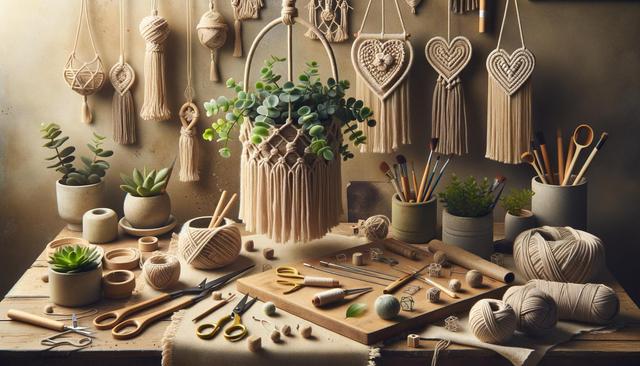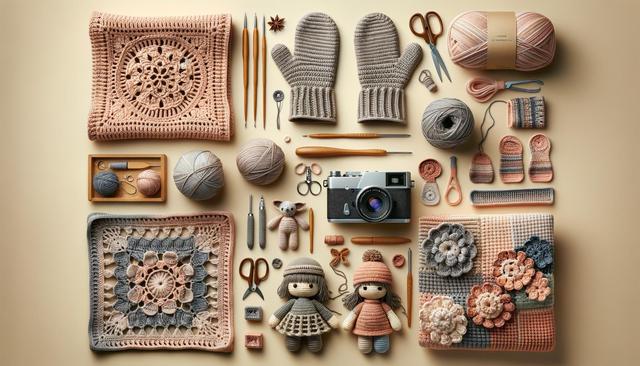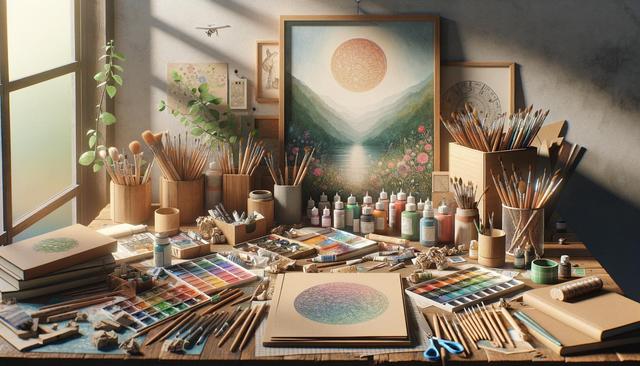DIY Macramé Plant Hangers for Every Decor Style
Macramé plant hangers offer a delightful way to incorporate greenery into your home decor while showcasing your crafting skills.

The Art of Macramé: A Brief Overview
Macramé is a crafting technique that dates back centuries, involving the use of knotting techniques to create intricate patterns and designs. Originating from Arabic weavers, it gained popularity in the Western world during the 1970s, becoming synonymous with bohemian and eclectic decor styles. The art of macramé involves a variety of knots, each adding a unique texture and complexity to the finished product. Mastering these knots can transform simple cords into beautiful plant hangers that complement any decor style, from minimalist to rustic.
One of the exciting aspects of macramé is its accessibility. It requires minimal tools, with the main components being cords, scissors, and occasionally, wooden or metal rings. This simplicity allows crafters of all skill levels to engage in the art form and create pieces that reflect their personal style. Furthermore, macramé is incredibly versatile, enabling crafters to experiment with different cord materials such as cotton, jute, or nylon, each lending a distinct look to the finished product.
Choosing the Right Cord and Materials
Selecting the appropriate materials is crucial for creating durable and aesthetically pleasing macramé plant hangers. The choice of cord can significantly affect the overall look and functionality of your project. Cotton cords are the most popular due to their softness and ease of handling, making them ideal for beginners. They also come in various thicknesses, allowing for different knot densities and textures.
For a more rustic or natural appearance, consider using jute or hemp cords. These materials offer a rougher texture and earthy tones, perfect for creating hangers that blend seamlessly with outdoor or nature-inspired indoor settings. If you prefer a modern or vibrant look, nylon cords come in a wide array of colors and offer a sleek finish.
- Cotton cords: Soft, easy to handle, versatile.
- Jute/hemp cords: Rustic, natural appearance.
- Nylon cords: Modern, colorful, sleek.
Basic Knots and Techniques
Understanding the basic knots is essential for crafting macramé plant hangers. The most commonly used knots include the square knot, half hitch, and lark’s head knot. These foundational techniques provide the basis for more complex patterns and designs.
The square knot is a fundamental macramé knot that is both simple and versatile, offering a balanced and symmetrical look. The half hitch adds texture and can be used to create spirals or waves, adding an element of movement to your design. The lark’s head knot is typically used to attach cords to a ring or dowel, providing a secure starting point for your project.
- Square knot: Symmetrical, versatile.
- Half hitch: Textural, dynamic.
- Lark’s head knot: Secure starting point.
Design Ideas for Every Decor Style
Macramé plant hangers can be tailored to suit any decor style, making them a versatile addition to your home. For a minimalist aesthetic, opt for monochromatic color schemes and simple patterns. Using thin, white cotton cords can create a clean and airy look, perfect for modern interiors.
If you prefer a bohemian vibe, embrace vibrant colors and intricate patterns. Incorporating beads or tassels can enhance the boho feel, adding visual interest and texture. For rustic or farmhouse decor, consider using jute cords and incorporating wooden elements, such as beads or rings, to complement the natural materials found in these styles.
- Minimalist: Monochrome, simple patterns.
- Bohemian: Vibrant colors, intricate designs.
- Rustic: Jute cords, wooden accents.
Conclusion: Bringing It All Together
Creating macramé plant hangers is a rewarding craft that allows you to blend creativity with functionality. By understanding the basics of macramé, selecting the right materials, and experimenting with different designs, you can craft beautiful hangers that complement any decor style. Whether you’re a seasoned crafter or a beginner, macramé offers endless possibilities to enhance your living space with greenery and personal touches. Embrace the art of knotting and transform your home into a haven of style and nature.





